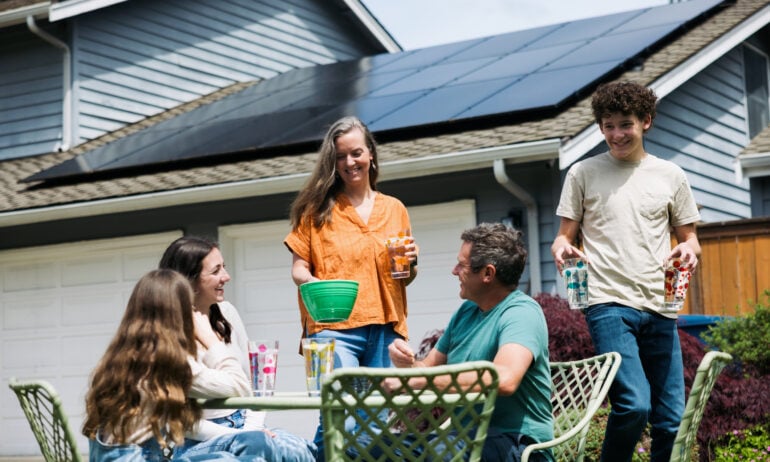What to Know About SRECs and Solar Panels
SRECs are digital documents that certify that energy was produced using solar power. They can be traded or sold.

Some or all of the mortgage lenders featured on our site are advertising partners of NerdWallet, but this does not influence our evaluations, lender star ratings or the order in which lenders are listed on the page. Our opinions are our own. Here is a list of our partners.
In certain states, Solar Renewable Energy Certificates, or SRECs, provide an incentive to residential solar customers. SRECs are separate from grants or solar tax benefits and offer a financial benefit beyond the potential savings homeowners might see by using their own solar energy. Here’s what potential solar customers need to know about SRECs.
What are SRECs?
SRECs are digital documents that certify that energy was produced using solar power. They are tracked in databases and can be traded or sold, similar to stocks, as their value fluctuates with the market. In this way, homeowners with solar panels can earn money from their solar systems.
» MORE: How much do solar panels cost?
How are SRECs used?
Some states require utility companies to generate a certain percentage of their energy from sustainable sources (known as a renewable portfolio standard). However, once electricity is added to a power grid, it’s impossible to determine where and how it was generated.
These states can use SRECs to track how much energy was produced with solar panels, which helps energy providers hit their targets and lets consumers earn credits for producing solar energy. Currently, eight states and Washington D.C. use SRECs, including Delaware, Illinois, Massachusetts, Maryland, New Jersey, Ohio, Pennsylvania and Virginia. Other states, like Kentucky, Michigan, Indiana and West Virginia, have areas that are eligible to earn SRECs and sell them in another state’s marketplace.
How do you earn solar renewable energy credits?
When you have solar panels in an eligible state, you earn one SREC for each megawatt-hour (1,000 kilowatt-hours) of electricity you generate. For example, if you have 10 solar panels that can produce 500 watts each, you could generate up to 6,000kWh per year in Ohio. That equals 6MWh, which earns six SRECs.
Your system’s output determines how many SRECs you’ll earn, which depends on how sunny your location is, the angle of your roof and how many solar panels you install.
What can you do with SRECs?
State SREC programs vary, but state programs and independent SREC brokerages allow you to trade or sell your SRECs. Similar to stocks, you can hold the SRECs until their value changes or sell them for cash, allowing companies to hit their renewable generation targets.
Some SRECs have a shelf life and can expire, so you might need to sell them within a few years or miss out entirely on a profit.
Common options for SRECs include:
Preselling SRECs to offset the cost of installation. Some state programs like Illinois Shines let you pre-sell your SRECs as part of your installation. Instead of receiving a check for your SRECs, you can use the value to defray some of the cost of installing solar panels.
Preselling SRECs for upfront payment. Instead of applying the value of future SRECs to the cost of installation, working with an SREC aggregator allows you to sell the advanced rights to your SRECs for the next 15 years. You get paid upfront but are hedging that the price of SRECs won’t go up.
Locking in an SREC price. If you’re worried about the value of SRECs dropping, you can lock in a price for one to five years with SREC aggregators.
Holding and trading SRECs as prices change. You can also hang on to your SRECs and sell them when the market value is higher, but you risk their value falling in the future.














